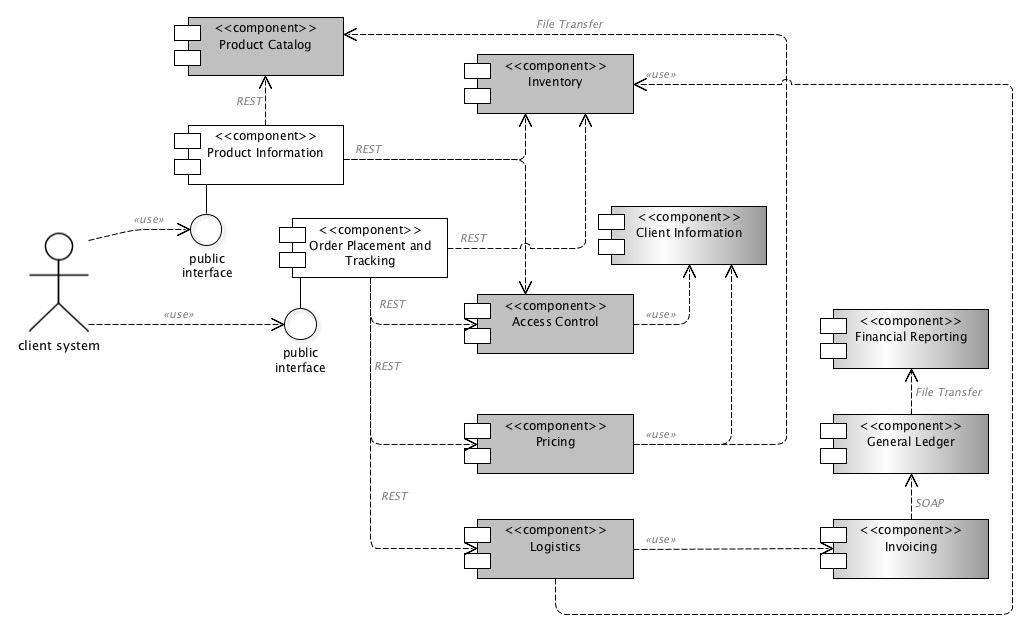Our partners are also large companies with automated administration, with several programs running on several machines. We have no interest in their architecture and the technology they use, but we want to integrate their operations. We want to serve them in a way that doesn't require any human interaction for the administration to order goods on either of our sides. To do so, a web service interface is provided that can be utilized no matter what IT infrastructure they use.
On our side, as we imagine the example, we recently replaced our monolithic application with microservices architecture, and though there are still some SOAP-based solutions in the system, most of the backend modules communicate using HTTPS and REST protocols. Some of the modules still rely on asynchronous file transfers done on a daily basis using FTP started from a UNIX cron job. The General Ledger system was programmed in COBOL. Fortunately, we do not need to deal with these dinosaurs.
What we have to deal with is the two frontend components that we will develop. These are as follows:
- Product Information
- Order Placement and Tracking
In the following image, you can see the architectural UML diagram of the structure that we look at. The parts we will have interaction with are only the frontend components, but it helps understand the working and their role if we have a bigger picture:

Product Information delivers information about a single product, but it can also deliver a list of products based on the query criteria. Order Placement and Tracking provides functions to place an order and also lets the client to query the state of past orders.
To provide product information, we need access to the Product Catalog module that holds the actual product details.
The Product Information module also has to consult with the Access Control module to see if a certain product can be delivered to the actual customer, and with the inventory to see if there is any product left, so we do not offer a product that is out of stock.
The Order Placement and Tracking also needs access to Product Inventory and Access Control modules to check whether the order can be fulfilled. At the same time, it also needs services from the Pricing module, which can calculate the price for the order, and from the Logistics module, which triggers the collection of goods from the inventory locations and shipment to the customer. Logistics also has a connection to invoicing, which has a connection to the General Ledger, but these are on the picture only to show that the travel of information does not end there. There are many other modules that run the company, all of which are none of our interest at the moment.
